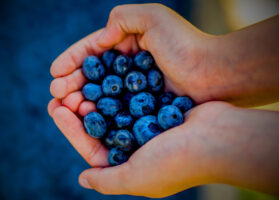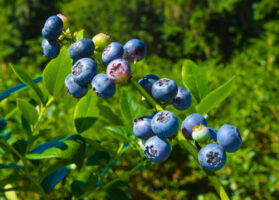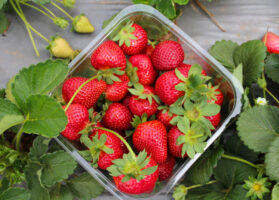Another big Michigan apple crop on tap
Overview of apples from Michigan in the U.S. market, complemented by charts from Agronometrics. Original published on August 7, 2023.
Michigan’s 2023 apple crop may not be as big as last year’s record 32,380,952 bushels (1.36 billion pounds), but it should be close.
An official estimate won’t be released until later in August, “But we have been hearing good things and believe the crop may be approximately 85% to 90% the size of last year’s,” said Diane Smith, executive director of the Lansing-based Michigan Apple Committee.
Honeycrisp, gala, and fuji are Michigan’s most popular varieties, she said. And Cripps Pink (Pink Lady), EverCrisp and ambrosia are growing in popularity as well.
New trees are maturing every year at Traverse City, Mich.-based North Bay Produce, said Ken Korson, apple and asparagus category manager.
EverCrisp production has been increasing for the past couple of years, Pink Lady had “decent volume” last year but will have even more this season, and ambrosia production “is just getting started,” he said.
The company will kick off its harvest the last week of August with the Wildfire gala, Premier Honeycrisp, paula red and ginger gold varieties.

Source: USDA Market News via Agronometrics.
(Agronometrics users can view this chart with live updates here)
Picking is expected to begin up to a week earlier than usual because of warm weather this summer.
“It’s been consistently warmer than normal,” Korson said.
Volume should be up slightly at North Bay Produce, and some early summer rainfall will help sizing.
“The crop looks pretty normal across the board,” he said.
Sparta, Mich.-based Applewood Fresh Growers LLC will begin its harvest at the end of August with its early back-to-school variety, Rave, followed by the popular SweeTango in early September, said Shelby Babcock, marketing and sales specialist.
Rave volume is expected to be close to double last year, and SweeTango will up by 15% to 20%, she said.
Growing conditions were typical for the Michigan region, and quality “looks to be very clean, with a good range of sizes,” she said.
Sparta-based Riveridge Produce Marketing Inc. plans to kick off its harvest the third week of August, three to four days ahead of last year, said Trish Taylor, marketing manager.
“Growing conditions were close to ideal,” she said. “There were no frost issues, and there has been adequate rain since the end of June.”
Dry conditions staved off the typical early-season scab and fungus pressures.
“It was simply too dry for those issues to thrive,” Taylor said.
Volume at Riveridge will be similar to last year, quality looks “really good” and sizing is average with a nice range, she said.
The company releases nearly 20 kinds of apples with the early varieties beginning in late August and the last one, Pink Lady, kicking off Nov. 1.
Honeycrisp, gala and fuji remain the grower’s most popular varieties.
The apple category has remained fairly stable during these inflationary times, said Korson of North Bay Produce. But costs remain high for materials, fuel and labor.
“We all have to be careful to make sure that we’re priced correctly for our customers,” he said. “If we’re priced too high, they might be buying one bag versus two.”
Some costs, like packaging materials, have decreased, said Brian Coates, vice president at Applewood Fresh Growers. But labor costs continue to increase.
High prices at retail have slowed apple movement, especially on bagged fruit, he said.
The retail price of a 3-pound bag of apples is so high that some consumers perceive bulk product to be cheaper and are picking up individual apples instead of consumer packs, Coates said.
At Riveridge, Taylor said prices of some materials, such as corrugate for boxes, have gone down, but the cost of plastic for packaging is up.
At store level, consumers continue to trade down for more price-point-friendly varieties, “but they recognize the value of apples – they store well and provide a high nutrient load,” she said.
The News in Charts is a collection of stories from the industry complemented by charts from Agronometrics to help better tell their story.
Access the original article with this (Link)






